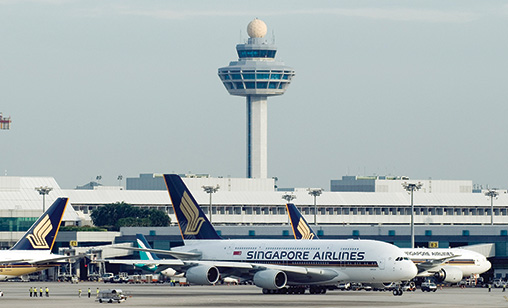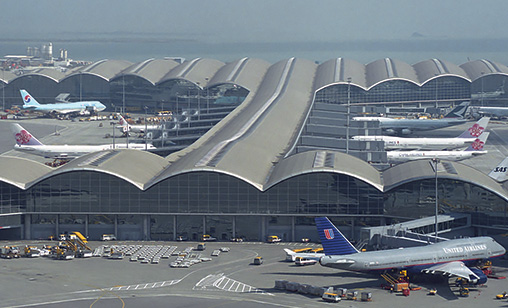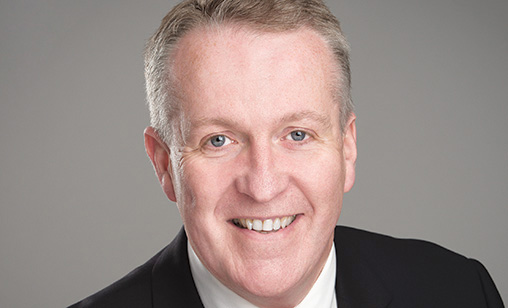Main Story
Time waits for no airline
Several Asia-Pacific airlines have hit profit walls in the last decade as low-cost carriers, Gulf and Mainland expansion and changing passenger behaviour have resulted in less populated premium cabins, intensified downward pressure on yields and eroded transit business at once unchallenged hubs. Is the region’s full service airline model broken? Or does it simply need to adapt?
July 1st 2017
In 2017, there is not a full service airline results statement that does not a lament the profit disconnect between booming passenger demand and declining yields. Read More » “We’re carrying more passengers, but yields are down and we are making less money,” is a common admission when profit drops are announced.
Two of the most recent casualties of this trend are also two of the region’s most highly regarded airlines. Singapore Airlines (SIA), last month voted the second best airline in the world, recently reported a 55% net profit decline, to $259.5 million for its year ended March 31, compared with the previous 12 months. In March, Cathay Pacific Airways announced a loss of $74 million for the 2016 fiscal year, its first annual deficit in eight years.
 |
The two top league carriers have fallen foul of market changes that in recent years have seen other Asia-Pacific full service carriers fall into loss. Thai Airways International, Garuda Indonesia, Malaysia Airlines (admittedly in exceptional circumstances), Japan Airlines, Virgin Australia and Qantas Airways have been in serious financial trouble despite the benefits of cheaper fuel, ever increasing passenger demand and a relatively stable global economic environment.
In its latest set of economic statistics, published in June, the International Air Transport Association (IATA), underscored the problems the region’s premier carriers face.
Global airline profitability for this year has been revised upwards from $29.8 billion to $31.4 billion. Although encouraging, the predicted profits are lower than the $34.8 billion result of the previous 12 months.
Based on this forecast, the world’s airlines will average a net profit of $7.69 for each passenger carried. But Asia-Pacific airlines are expected to post a $7.4 billion net profit in 2017, or $4.96 per passenger, compared with $8.1 billion in 2016. The fall off will happen as passenger demand increases by 10.4% ahead of a capacity expansion of 8.8%.
Factors that are seriously impacting on the region’s full service airlines are the relentless growth and competition from low-cost carriers, the route re-structuring forced on Asia-Pacific carriers by the Gulf airlines, aggressive Chinese network expansion, particularly for Cathay Pacific and Singapore Airlines, and a failure to keep up with technological change.
“I think something happened ten to twelve years ago and that was that governments started accepting, once AirAsia arrived on the scene, that ‘hey there is an alternative [to the full service carrier] and it does make a difference to our economies?’ It’s taken a number of carriers a while to wake up to that,” the executive chairman of the CAPA consultancy, Peter Harbison said.
The director general of the Association of Asia Pacific Airlines (AAPA), Andrew Herdman, pointed out another problem. “Why have Cathay and Emirates and others seen profits fall? Despite passenger growth, the long-haul premium market is experiencing competitive pressure. Load factors are historically high, but the price being charged to get that business is coming down.”
 |
Traditionally, Herdman said, a premium was paid for a non-stop flight compared with a one-stop flight. “The going rate for a one-stop service, as offered by the Gulf carriers, compared with the non-stop offered by Asian carriers has narrowed,” he said.
“The Gulf carriers compete with a one-stop, but the Asian carriers compete with non-stop. It is a narrowing of the premium you can get for non-stops because of the proliferation of Gulf carriers.
“And now Chinese carriers are expanding aggressively, particularly in the Pacific and, to a less extent, to Europe. This is putting the squeeze on the full-service carriers.”
Changes in the business traffic landscape is an issue Hawaiian Airlines chief executive, Mark Dunkerley, told Orient Aviation: “I’m a big believer in the fact you can’t fight the big demographic and the economic changes out there. One of the dominant shifts is that business travel is stagnating and travel for leisure is growing.
“I think we are on the right side of this by focusing on the leisure traveler. It is no surprise to me that the more heavily business-focused airlines are against those airlines that are more intently leisure focused. They are going to be fighting over a smaller and smaller piece of the pie.
“Whether you adapt to get away from that or work hard to be more compelling within that smaller piece of the pie remains to be seen. That’s a question best answered by them.”
Harbison said all carriers operate in different circumstances. “In the case of Cathay,” Harbison said, “the Chinese carriers have been taking a lot of their home market away. They obviously did see it coming. But what were they to do about it?”
It is universally agreed that transformation is critical for the legacy airline sector. Qantas Airways recorded a loss of $2.6 billion three years ago. Today, it is reporting record profits after a three-year program that saw thousands of jobs lost, inefficient aircraft retired or sold and many routes either eliminated or transferred to its Jetstar budget group subsidiaries.
 |
| 'There is an obsession in the airline industry with having massive data centres because a lot of airline IT directors think it is really cool to have this domain of a hosting server centre. All of the dot.coms that are stealing our business, none of them have server centres. They all use Amazon web service or something else, which actually generally costs a fraction of having these very old fashioned data centres which you can’t possibly hope to manage' |
| Peter Bellew Malaysia Airlines Berhad group managing director |
In June, as the three-year program was signed off, costs of $3 billion had been taken out of the group’s budget. Qantas Group chief executive, Alan Joyce, told Orient Aviation there would be no let-up in seeking cost savings.
“At our investment day we talked about our continuing transformation program. We said we would continue targeting $400 million in benefits every year going forward. We gave some outlines of where we could make these savings,” he said.
“For example, with the B787-900s beginning to arrive this year we have a great agreement with the pilots, engineers and cabin crew for productivity improvements that will save significant fuel.
“We’ve been changing for the 97 years we have been flying. The last few years have accelerate transformation because of circumstances. You’re absolutely right. We looked at domestic and international yields. In the last decade they have gone down by 20% to 30%.
“Just how tough it is can be seen from the fact that when Qantas started flying in 1936 it cost 122 weeks of an average person’s salary to fly from Sydney to London. When we got the B747s it was 22 weeks of an average person’s salary. Today, it is down to one or two weeks. So what’s going to happen in the next one or two decades with the benefits of new technology? The airlines that make money will have to be really super-efficient.”
Unlike Cathay and SIA, some analysts suggested to Orient Aviation that Qantas was fortunate that it plumbed the depths. “It got to the hard place and they had to do something. Fortunately, they had the right person (Joyce) there to do it. They had the balls to do it. He put up with such a horrible lot of nastiness,” said Harbison.
“The key thing Qantas did was identify where they were haemorrhaging most dramatically. They were victim to all the sixth freedom carriers on the planet, but the ones that were hurting it most were the Gulf carriers.
“So they took the logical step of establishing a partnership with Emirates. You know you definitely are not going to beat them so what are you going to do? Qantas joined them. It made a very clever move that was well executed.”
Herdman agreed transformation cannot be a one-off event. “Ongoing productivity improvements and transformation are constants. They are often cast as crisis-driven. You have two or three-year programs, but to be honest, they are followed by more programs. The markets are always adjusting. The competition is always changing so you must constantly evolve your response,” he said.
Following their recent poor results, both SIA and Cathay Pacific have announced major transformation programs. In Cathay’s case, there have been staff cuts of 600 and more layoffs are expected, if the views of analysts are correct.
Cathay Pacific chairman, John Slosar, has said there will be structural challenges ahead at the carrier, with “intense and increasing” competition from Chinese airlines. Mainland carriers have expanded their networks to connect Chinese cities directly with the U.S. and Europe, which has eaten into Cathay Pacific’s transit business through its Hong Kong hub.
SIA’s CEO, Goh Choon Phong, has been introducing strategic changes at the carrier since he took charge in early 2011. He transformed it from a group that essentially consisted of SIA and full-service regional carrier, SilkAir, to a stable of airlines that includes low-cost long-haul Scoot and budget airline, Tiger Airways.
 |
| 'Medium-haul, five to eight hours, seems to be the sweet spot. Even there, it’s not that profitable. Also, there is no example of a year-round point-to-point route. So all the long-haul, low-cost carriers essentially are network carriers. They need feed. You can’t have a long-haul, low-cost carrier without it being part of a network. In that sector the evidence is that margins are low and may be unsustainable' |
| Andrew Herdman Association of Asia Pacific Airlines director general |
It was a major shift for traditional SIA. In the group’s latest results, SIA’s profit declined, but the budget subsidiaries reported improved profitability. Goh has set up a transformation office that will decide on necessary changes.
“The transformation is not just about how we can cut costs, but how we can generate more revenue and improve our processes more efficiently so we can be a lot more competitive, going forward,” he said. It is aimed at reshaping the business so that it “continues to deliver high-quality products and services, though with a significantly improved cost base and higher levels of efficiency”, SIA said
It should be pointed out that plunging profitability is not a region-wide malaise in the industry. Apart from Qantas, described by Joyce as “being in a sweet spot”, Air New Zealand, All Nippon Airways and several Mainland carriers have reported good profits.
One new challenge many in the industry raise is the re-emergence of the long-haul, low- cost model, which could threaten Asian airlines on their long-haul routes, particularly to Europe. The LCCs - more than 50 are flying in the Asia-Pacific - have played a big role in forcing prices down in the region. They also have become major competitors to legacy carriers. Some of them now dominate domestic traffic in countries from Thailand to the Philippines, Malaysia and South Korea.
Long haul LLCs, AirAsia X and Cebu Pacific, will almost certainly fly European routes at some stage. Norwegian Air, which serves Bangkok from Oslo, Stockholm and Copenhagen, will launch flights from London to Singapore in October, with B787 Dreamliners. New British long haul LCC, Level, has announced flights to the U.S. and it is difficult to imagine it would not turn its attention to Asia, the world’s fastest growing aviation market. While the SIA Group’s Scoot launched flights to Athens last month, these are still challenges the parent carrier can’t ignore.
AAPA’s Herdman believed long-haul, low-cost is still an experiment. “Look at the profitability of these operations. They have had mixed results. It’s been less successful,” he said.
“Medium-haul, five to eight hours, seems to be the sweet spot. Even there, it’s not that profitable. Also, there is no example of a year-round point-to-point route. So all the long-haul, low-cost carriers essentially are network carriers. They need feed. You can’t have a long-haul, low-cost carrier without it being part of a network. In that sector the evidence is that margins are low and may be unsustainable.”
If there is one issue where there is universal agreement among airlines it is that effective employment of IT and Big Data technologies are critical to the airline industry’s ability to thrive.
Speaking in Cancun, SIA’s Goh disputed the often voiced view that airlines were lagging behind the times when it came to new technology. “If you look into airlines, and certainly most of the Asian airlines, you will see significant investment in technology. My own airline is one example of that. As an industry body we should certainly see how we can harness the awareness and also the ability of airlines to use technology in general.”
Malaysia Airlines (MAB) group managing director, Peter Bellew, said: “We were about 20 years behind the technology until last year when Christoph Mueller (Bellew’s predecessor at MAB) did something about it by moving everything onto the cloud.
“There is an obsession in the airline industry with having massive data centres because a lot of airline IT directors think it is really cool to have this domain of a hosting server centre. All of the dot.coms that are stealing our business, none of them have server centres. They all use Amazon web service or something else, which actually generally costs a fraction of having these very old fashioned data centres which you can’t possibly hope to manage,” he said.
As to the question of whether the legacy model is broken, the general view is that in many instances it definitely needs fixing. “What is the legacy airline model? They’re all very different. Cathay is a sixth freedom carrier and Qantas is an anti-sixth freedom carrier. All of the establishment sixth freedom carriers are under attack from the Gulf carriers,” said CAPA’s Harbison.
“And China is going to attack everybody, including the sixth freedom carriers. Once they get their act in gear they’ll be doing not only third and fourth but sixth. My answer to the question is no, the legacy airline is not gone, but the legacy airline has to adapt.”